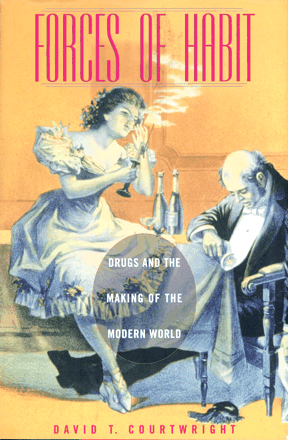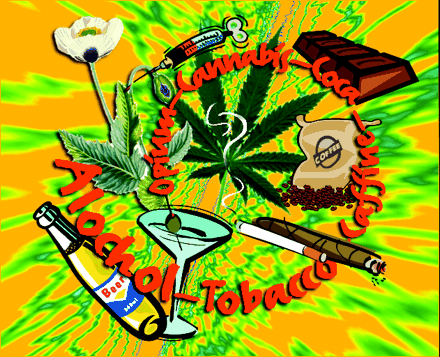The Opium (and Tobacco and Caffeine) of the Masses
This cleverly, if somewhat inaccurately, titled book is well referenced and historically appealing. I say inaccurately because the book deals only with substances that are psychoactive and habit-forming. In the introduction, Courtwright explains that he uses the term “drug” as “a convenient and neutral term of reference for a long list of psychoactive substances.” For someone trained in pharmacology, this cavalier use of the word “drug” tends to be disconcerting; for those not trained in pharmacology, it is frankly misleading. Courtwright's essential premise is that “merchants, Capitalists, and the political elites” have used habit-forming drugs for centuries to enslave the proletariat and foster economic success at the expense of the physical and mental health of the common man.

The book is written in three parts, with an extensive bibliography and bibliographical notes section. Part I, “The Confluence of Psychoactive Resources,” introduces the cast of chemical characters that Courtwright considers to be the problem. The first chapter covers “The Big Three: Alcohol, Tobacco and Caffeine.” The author goes back as far as 1500 bc, to the earliest days of viticulture in and around the Aegean, and traces its spread throughout the world. He follows a similar course for tobacco, with its introduction into European cultures in 1492. He traces coffee and tea consumption similarly. The second chapter, entitled “The Little Three: Opium, Cannabis, and Coca,” describes in detail the development and use of opium, morphine, the ganja complex, the marijuana complex, coca, and cocaine, starting in 6000 bc with the cultivation of cannabis in China. The very titles of the two chapters provide the first clue to the relative harm the author ascribes to alcohol, tobacco, and caffeine, as opposed to opium, cannabis, and coca. This view persists throughout the book.
The rest of the book follows no particular historical order. Part 2, “Drugs and Commerce,” focuses on the economic reasons for the spread and use of these substances and the financial benefits derived from them. Part 3, “Drugs and Power,” covers the success and failure of governments to tax and control the use of such drugs. Within these general topics, the author covers the causes and consequences of the Opium Wars, Prohibition, snuff-taking, the influence of the East India Trading Company, the antagonism between the restrictionists and the prohibitionists, the checkered history of the attempts to regulate vodka consumption in the former Soviet Union, to name but a few. There is a lot of fascinating history here. There are many entertaining anecdotes, complemented by numerous nineteenth-century woodcuts and drawings that show the evils of drink, smoke, and use of psychoactive substances.
The author clearly has a bias, and it permeates the book. If the author had stuck to a social and economic history of alcohol and tobacco promotion, use, and abuse, he would have provided an interesting and educational read. However, his predilection for equating caffeine, alcohol, tobacco, sugar, marijuana, opium, cocaine, and heroin as societal evils that were the “fuels for industrial civilizations” tends to wear thin over the 207 pages of text. Courtwright writes well, but his soapbox perspective is an annoying distraction. The last chapter, entitled “Licit and Illicit Drugs,” seems more even-handed than earlier ones, and provides a fairly objective discussion of the differences between alcohol and tobacco versus heroin and cocaine, as well as some of the conundrums associated with their use and control. There is also reference in this chapter to the addiction liability ratings published by Maurice Seevers in 1958 in Drill's Pharmacology and Medicine. It was a pleasant surprise to come across this reference.

David Courtwright is Distinguished Professor of History (with a joint appointment in the College of Health) at the University of North Florida. He has written other books on similar topics.
- © American Society for Pharmacology and Experimental Theraputics 2002



